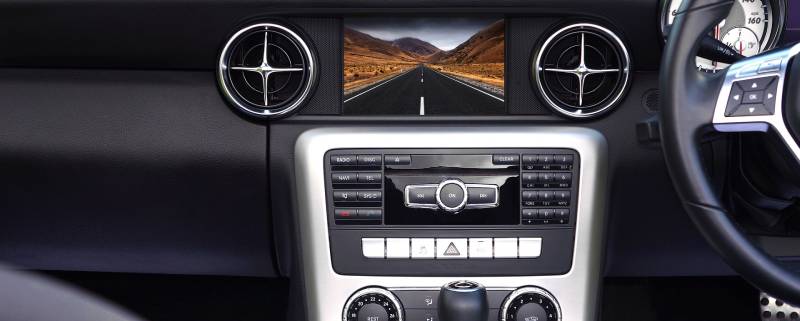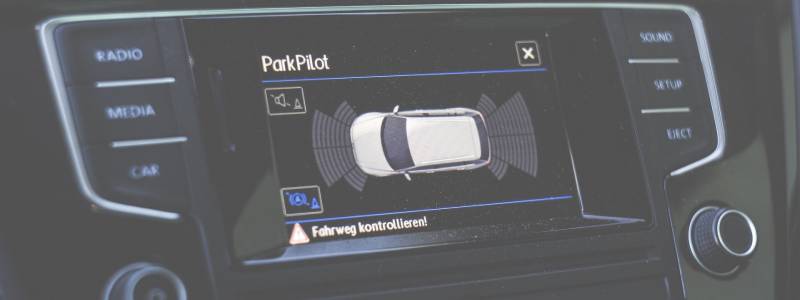The Purpose
Reverse warning systems are designed to minimize the chance of an accident by covering the “dead areas” in the driver’s field of vision and generally improving it.
These systems give a feeling of security when driving backwards just like eyes on the back.
The types of reversing warning systems available on the market are based on ultrasound or video photography.
Combining the two systems together in the vehicle compensates for the limited field of vision and contributes to increased safety when reversing.
In new vehicles, there are integral systems that also know how to automatically scan and brake the vehicle if it detects an unavoidable accident.
Reverse Sensors
Reverse sensors are the most common, due to their cheap and simple cost.
They are based on ultrasonic sensors, which allow objects to be detected from a distance by transmitting high-frequency sound waves for a short period of time.
The sound waves encounter objects and bodies, and are reflected from them as an echo to the sensor.
The sensors are usually installed on the rear bumper and provide the driver with an audible and visual alert as he approaches objects when reversing.
Disadvantages:
- Reverse sensors do not detect objects that are thin or perforated such as a grid, bushes, a narrow pillar or even a person’s leg because the return of the sound is indirect and then the alert we receive will be unclear.
- The alert is not always immediate and thus a situation may arise where the vehicle hits the object before an alert is received.
Reverse Camera
The advantage of a reversing camera is very noticeable, it provides us with a true picture of what is happening in the back.
There are reversing cameras that also give parking lines and show the driver the lane he should be on according to the driving angle.
In most new vehicles the camera is already installed by the manufacturer.
Disadvantages:
In rainy or sunny weather, the image will be less clear.
Since the camera is installed at the back, it accumulates quite a bit of dirt and then a cloudy image is obtained.
The Dangers Of The Systems
The automotive industry is constantly trying to “illuminate” dead areas and add more and more systems that will help and protect the driver and those around him and minimize the chance of an accident.
The problem that arises is that drivers rely on these systems completely and sometimes even dependently and do not scan the area with mirrors or looking back as required.
Also, once we get used to driving with vehicle security systems, driving a vehicle without these systems makes it difficult for the driver.
What Does The Law Say?
Section 45 of the Traffic Regulation States:
“A driver will not drive in reverse unless necessary, and if necessary, and after taking the necessary measures in the existing circumstances to prevent.
(1) risk of injury;
(2) disruption”
Emphasis
- If we need to reverse, we will plan the route that will be the shortest, we will drive slowly and carefully when we look in all directions and from time to time even stop and actually turn around and look backway and sideway.
- Except in cases where parking conditions do not allow it physically, parking in reverse is the best and safest way to park.
- When we drive in reverse, it is best to make sure that we do not have interruptions in the vehicle, such as radio/music, talking on the phone or anything else that distracts us.
- If possible, we should open the windows a little so we can hear if we are called to stop.
- We will turn on lights and signal to enter the parking spot.
- It is advisable to clean the reverse camera from time to time proactively.
- It is true that we have parked thousands of times, and we are good in reversing, however, it is always worthwhile and better to pay attention to all the highlights and take them as seriously as the first time.
Recommendations
Drive slowly and carefully. The best safety will come with the combination of the safety systems and with our skills as drivers.
Always be aware that the safety systems alone will not be able to prevent an accident and are only “assisting the driver“.
If we focus on searching for “surprises” that may arise, the chance of being surprised and getting into an accident will be significantly reduced.
Take care of yourself and your family!
At your service always,
wishing you a pleasant ride and a safe arrival!
Vehicle Fleet Management
Traffic Safety Official
LUPU – Car Fleet Management






